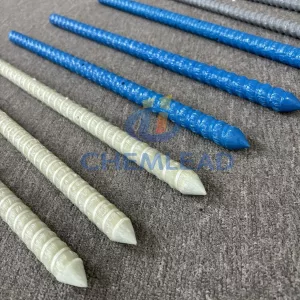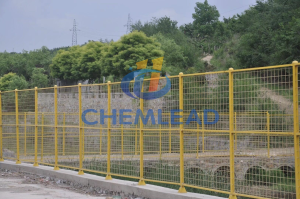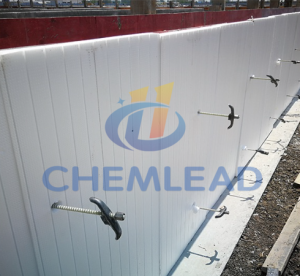+8613776545860



Why Fiberglass Rebar is the Ideal Choice for Retaining Walls: Benefits and Applications
Meta Description: Discover why fiberglass rebar (GFRP) is the perfect solution for retaining walls. Learn about its corrosion resistance, durability, and cost-effectiveness in challenging environments.
Introduction
Retaining walls are essential structures designed to hold back soil, prevent erosion, and create usable spaces in sloped areas. However, these walls are often exposed to harsh environmental conditions like moisture, chemicals, and temperature fluctuations, which can compromise their integrity over time. Traditional steel rebars, while strong, are prone to corrosion in such environments. Enter fiberglass rebar—a lightweight, durable, and corrosion-resistant alternative that is revolutionizing the construction of retaining walls. In this blog, we’ll explore the benefits and applications of fiberglass rebar in retaining walls and why it’s becoming the material of choice for engineers and contractors.
What is Fiberglass Rebar?
Fiberglass rebar, also known as GFRP (Glass Fiber Reinforced Polymer) rebar**, is a composite material made of glass fibers embedded in a polymer resin. Unlike traditional steel rebars, fiberglass rebars are non-metallic, making them immune to corrosion and highly resistant to environmental degradation. They are lightweight, strong, and ideal for use in challenging construction environments.
Why Use Fiberglass Rebar in Retaining Walls?
Retaining walls are constantly exposed to moisture, soil pressure, and sometimes chemicals, making them susceptible to deterioration over time. Here’s why fiberglass rebar is the ideal choice for these structures:
1. Corrosion Resistance
One of the biggest challenges with steel rebars is their susceptibility to rust, especially in moist or chemically aggressive environments. Fiberglass rebar, on the other hand, is completely immune to corrosion. This makes it perfect for retaining walls in coastal areas, regions with high rainfall, or locations where de-icing salts are used.
2. Lightweight and Easy to Handle
Fiberglass rebar is about 75% lighter than steel, making it easier to transport, handle, and install. This reduces labor costs and speeds up construction timelines, which is a significant advantage for large retaining wall projects.
3. High Tensile Strength
Despite being lightweight, fiberglass rebar has a higher tensile strength than steel. This means it can withstand significant soil pressure and external forces, ensuring the long-term stability of retaining walls.
4. Durability in Harsh Environments
Fiberglass rebar is resistant to chemicals, UV rays, and extreme temperatures, making it suitable for retaining walls in industrial, agricultural, or coastal settings. Its durability ensures a longer lifespan with minimal maintenance.
5. Cost-Effective in the Long Run
While the upfront cost of fiberglass rebar may be higher than steel, its long-term benefits far outweigh the initial investment. Reduced maintenance, longer lifespan, and lower replacement costs make it a cost-effective solution for retaining walls.
6. Non-Conductive and Thermally Insulating
Fiberglass rebar is electrically non-conductive, eliminating the risk of electrical hazards. Additionally, its low thermal conductivity helps reduce thermal bridging, which can improve the energy efficiency of structures.
Applications of Fiberglass Rebar in Retaining Walls
Fiberglass rebar is particularly well-suited for retaining walls in the following scenarios:
– Coastal Areas: High salt exposure can accelerate steel corrosion, but fiberglass rebar remains unaffected.
– High-Rainfall Regions: Moisture-resistant properties make it ideal for areas with frequent rainfall or high humidity.
– Industrial Sites: Chemical resistance ensures durability in environments with exposure to acids, alkalis, or other corrosive substances.
– Cold Climates: Fiberglass rebar is unaffected by de-icing salts, which can cause steel to rust.
– Seismic Zones: Its high tensile strength and flexibility make it suitable for areas prone to earthquakes or soil movement.
Installation Tips for Fiberglass Rebar in Retaining Walls
To maximize the benefits of fiberglass rebar, proper installation is key. Here are some tips:
– Use compatible ties and supports designed for GFRP rebars.
– Avoid sharp bends or excessive force during installation to prevent damage.
– Follow manufacturer guidelines for cutting and handling to maintain structural integrity.
– Ensure proper concrete cover to protect the rebar from UV exposure.
Case Study: Fiberglass Rebar in Action
A coastal community in Florida recently replaced steel rebars with fiberglass rebars in their retaining walls to combat the persistent issue of corrosion caused by saltwater exposure. After five years, the walls showed no signs of deterioration, while neighboring structures with steel rebars required extensive repairs. This real-world example highlights the long-term benefits of using fiberglass rebar in challenging environments.
Fiberglass rebar is a game-changer for retaining walls, offering unparalleled corrosion resistance, durability, and cost-effectiveness. Its lightweight nature, high tensile strength, and ability to withstand harsh environments make it the ideal choice for modern construction projects. Whether you’re building a retaining wall in a coastal area, industrial site, or cold climate, fiberglass rebar ensures long-lasting performance with minimal maintenance.
Ready to upgrade your retaining wall project? Consider fiberglass rebar for a stronger, more durable, and cost-effective solution.
Have questions about using fiberglass rebar in your next project? Contact us today to learn more about its benefits and how it can enhance the durability of your retaining walls!




 Get Free Quote Now! Don’t Hesitate!
Get Free Quote Now! Don’t Hesitate!